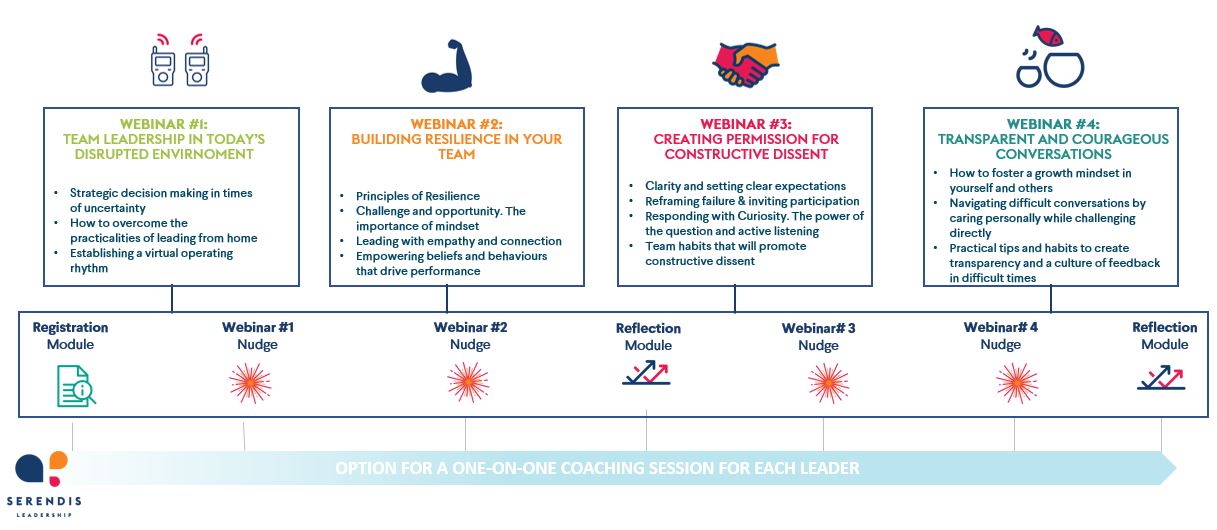
In these unsettling times, leaders and teams are navigating uncharted waters.
For many businesses profit, revenue and cash-flow runways are evaporating and working from home is the new normal, presenting its own raft of challenges and opportunities.
In crises, when we feel under threat, our focus naturally narrows, making it harder as a leader to make the best decisions and have a positive impact on our people.
Leadership development and training to date has been predicated on operating in very different contexts to the specific challenges we all face right now in March 2020.
Over the next few weeks, we will be sharing some practical tools and guidance to help leaders lead effectively in the current circumstances, Please, share your ideas, insights, suggestions and leadership practices so any leader, wherever they are working, can use them.
Week 1
As leaders, many of us this week need to ensure swift and effective decisions are made so the team can focus on the most high value work for the upcoming week. The temptation will be strong to make these decisions yourself, and there are some upsides to this, but our house view is the best strategic decisions are often made when leaders are able to harness a diverse range of ideas and thinking from the team.
Our first focus is strategic decision making in uncertainty and volatility.
With an increasing uptake in flexible work in recent years, many, but not all of us, have some experience working from home. But a day here or there working from home is very different from working from home all, or most, of the time. Getting used to the practicalities of leading from home is the second area we explore.
Finally, establishing a virtual operating rhythm for your team, is this week’s final focus area.
Week 1 Focus area 1 – Strategic decision making in uncertainty
Better outcomes and more creative solutions come out of teams that are prepared to challenge themselves and lead robust debates.
More than ever, you need to engage your team and collectively identify the best strategy to perform during disruption. Teams that do this better agree first on the overall objective. Your role as their leader is to define what you need to solve for as a priority. The key question you want to ask yourself is ‘What are we trying to solve for this week?’. This will mostly be driven by your personal purpose or perhaps how you have defined your team’s mission. This may be about delivering for your clients, ensuring risks are mitigated, maintaining performance for your investors or keeping people engaged and connected.
Your first priority is to reiterate this overarching objective and ask your team to come together virtually to ideate on how best to continue to deliver on this objective given the circumstances.
Facilitate a discussion where everyone is expected / invited to participate. As a leader speak last and draw out ideas from everyone in the team.
At the end of the discussion, your role is to acknowledge what you have heard and make a final decision on the key priorities. Clarify direction, summarise the objectives and plan and follow up with clear steps, commitments and responsibilities so the team is absolutely clear on their priorities for the next few days.
Week 1 Focus area 2 – The practicalities of leading from home
Striking the right balance between task and relationship is always critical, but now more than ever, people working from home are likely to feel less connected and more anxious.
Given this, our counsel is to invest time in reaching out to each of your team members one on one. This will develop trust, empathy and psychological safety. Here are some ideas for your check-in conversations:
- What is keeping you awake at night?
- What could I do to help?
- What should we do differently as a team?
- What opportunities are you seeing for our team?
As your team members share their challenges, make sure to share some of your own. Consider being vulnerable as it will help foster openness.. Bypassing this step and going straight to task will slow your team’s progress in the week’s ahead as people feel less trusted and supported.
Week 1 Focus area 3 – Establishing a virtual operating rhythm
Chances are the operating rhythm your team was using back in February is no longer fit for purpose. Taking into account people’s priorities and needs at home you should discuss and agree when and for how long you will meet as a team.
The agile way of working with strategic sprints is very relevant in this volatile environment and we would recommend a weekly strategy session and bi-weekly check-ins. Make sure to set up one or several chat channels as well so that people can communicate throughout the day, replacing the usual ‘desk drop-in’ by a virtual chat.
As well as formal team meetings, we are noticing many teams are setting up virtual hang-out times where people turn their zoom cameras on at a particular time to have some fun and strengthen connections.
Now more than ever is the time to connect 1 on 1 with each of your team. Agree this early and communicate this with your team. Whilst many of us need to juggle our home responsibilities, the absence of a commute means there is more time each day for you as a leader to spend virtual time with each team member.
Serendis sees these simple, powerful leadership practices as key to laying the foundations for the team journey ahead.
Exercising Leadership from Home…




